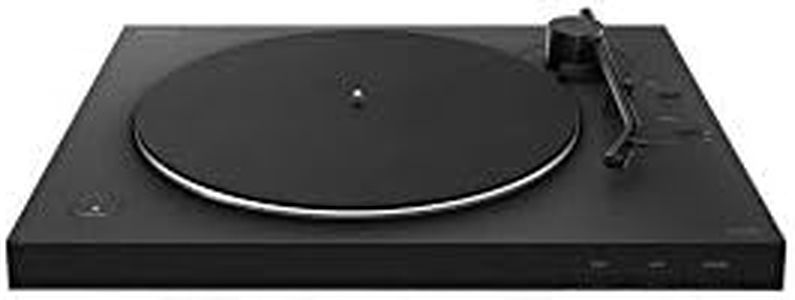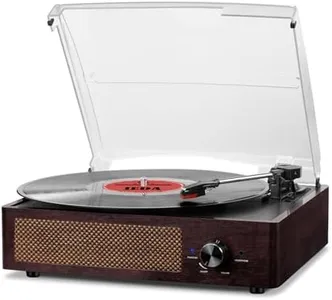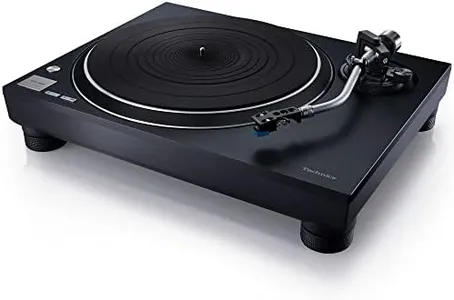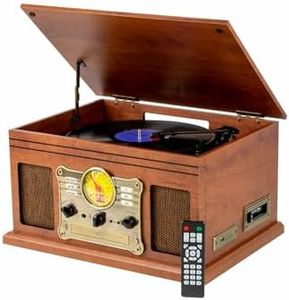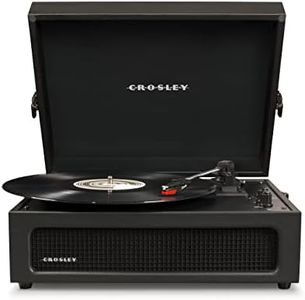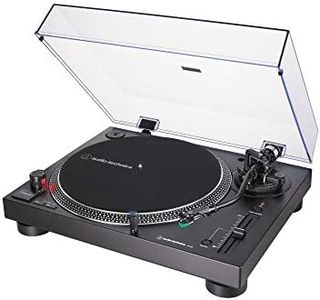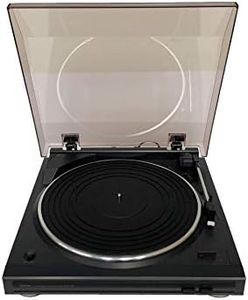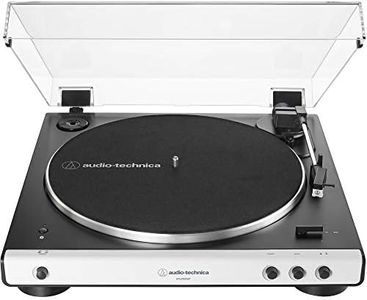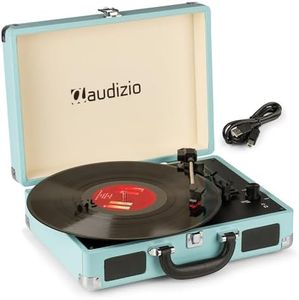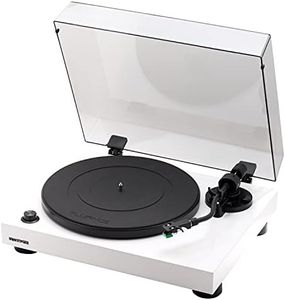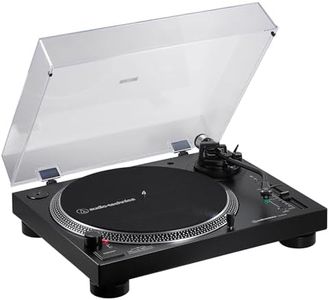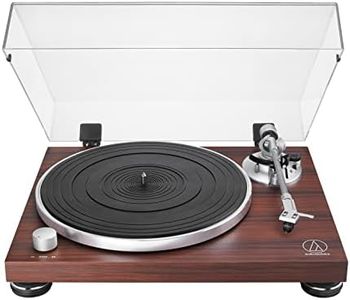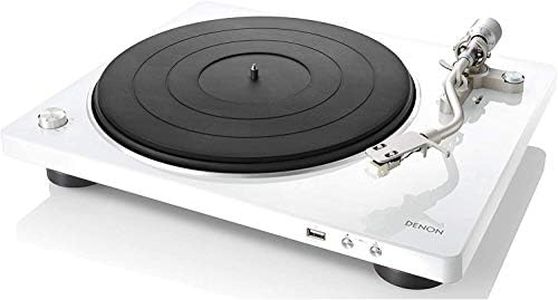We Use CookiesWe use cookies to enhance the security, performance,
functionality and for analytical and promotional activities. By continuing to browse this site you
are agreeing to our privacy policy
10 Best Vintage Record Players
From leading brands and best sellers available on the web.Buying Guide for the Best Vintage Record Players
Shopping for a vintage record player is an exciting journey, as it lets you combine nostalgia with your unique taste in music and style. To make sure you end up with a player that will make you happy, you’ll need to look out for a few key characteristics. Consider how and where you’ll use your record player, what kinds of records you have or want to collect, and whether you want a piece that’s mainly decorative or one you’ll use regularly. Understanding the main features will help you identify the right fit for your needs and ensure your music sounds just the way you like it.Drive TypeThe drive type refers to how the record player’s platter (the part where the record sits) is powered. There are two main types: belt-drive and direct-drive. Belt-drive turntables use an elastic belt to spin the platter, often resulting in less vibration and a warmer sound. These are great if you want to enjoy relaxed, focused listening sessions. Direct-drive turntables have the motor directly under the platter, giving more consistent speed and quicker starts; they are popular with DJs or anyone who wants to cue or mix music. For most vintage record player fans, a belt-drive is ideal for listening at home, while a direct-drive may suit those who want more manipulation or plan to use the player often.
Speeds SupportedThe speed is measured in revolutions per minute (RPM), and the most common are 33 1/3, 45, and sometimes 78 RPM. Each speed matches different types of records (LPs, singles, shellac records). If you own or plan to buy older or various types of records, make sure your vintage record player supports the speeds you need. If you only play modern LPs, just 33 1/3 RPM might be enough, but if you want to explore singles or really old records, look for a model that can play more speeds.
Cartridge and StylusThe cartridge holds the stylus (needle), which reads the grooves of your records. This part is essential for sound quality and preserving your vinyl. Some vintage players have fixed cartridges that can’t be changed easily, while others let you swap them out. If you're after the best sound or plan to listen to a lot of records, look for a player with an easily replaceable cartridge. Consider whether replacements are accessible if your player is very old.
Condition and Maintenance NeedsThe state of a vintage record player can vary widely, from almost mint to heavily used. Condition matters because older models may need repairs or maintenance to work properly. Players in good shape will usually work right away, while those in poor condition might need parts or servicing. If you're comfortable fixing things, a less-than-perfect player could be a rewarding project. If not, aim for one that's already been serviced or tested.
Built-in Sound vs. External SpeakersMany vintage turntables come with built-in speakers, but the sound quality may be limited. Other models need to be connected to separate speakers for better audio. If you're looking for simplicity and portability, built-in speakers might suit you. If you want richer sound or to hook up to a full audio system, choose a player that lets you connect external speakers.
Aesthetic and Build QualityThe visual design and materials of a vintage record player are big parts of its appeal. Some are made with classic wood finishes, metal accents, and unique styling. Durable build materials can ensure a longer life and better performance. If the look matters to you, pick a player that matches your taste and feels sturdy — it’ll not only sound good, but make a beautiful statement in your space.
Auto vs. Manual OperationSome vintage turntables are fully automatic — you just press a button, and the tonearm lifts and plays the record. Others are manual, requiring you to place the needle on the record yourself. Automatic systems are convenient if you want an easy, hands-off experience, while manual ones give a more classic, hands-on feel and less mechanical complexity. Choose based on whether you prefer convenience or more direct involvement.
